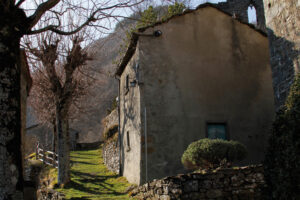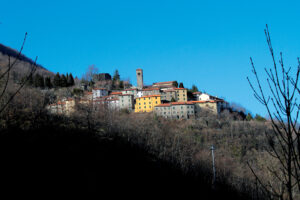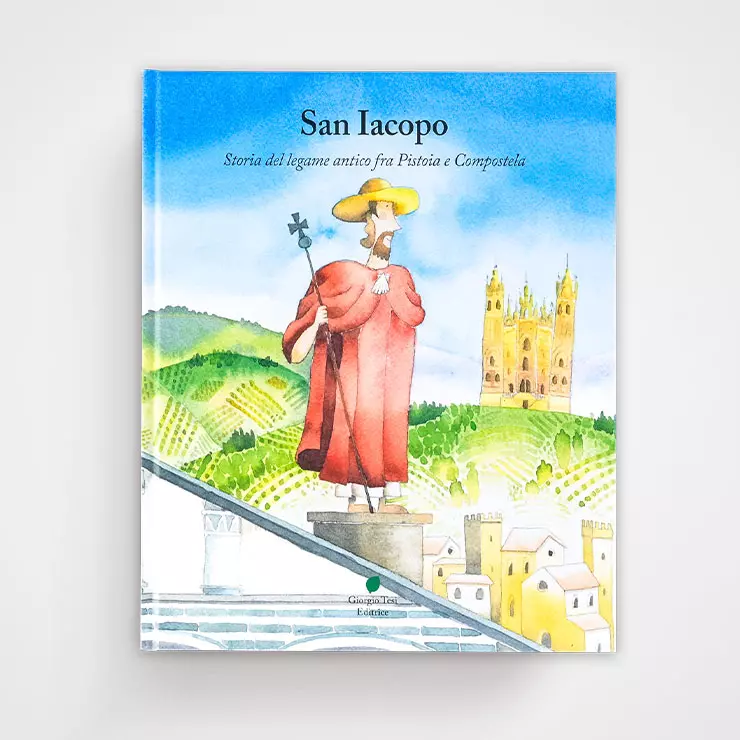Numerous intriguing destinations, from Pavana to Torri, overlooking via Francigena, the medieval track for pilgrins.
Like bird nests perched on a tree, there are clusters of houses hovering over a hill, a medieval rock that overlooks them, a famous ancient road that, as it dwindles, gets lost among the green woods, only one bearded inhabitant on the land like a broom shrub, and by now the only reminder of a more vital past: this is Sambuca today.
It has not always been like this, however. The town is ancient; it has an important history for its bellicose nature. The name itself, most likely of Roman origin, speaks of war (the sambuca was a military machine used by the military forces in Rome) and the war brought a large part of the historical events of the Castrum Sambucae (the Roman military camp of Sambuca).
The strategic position of the Castle that lies between Pistoia and Bologna along the Via Francigina attests to the fierce and unruly nature of the inhabitants. In 1313 Selvaggia dei Vergiolesi, the woman who was the amorous subject in the poems of medieval poet and contemporary of Dante, Cino da Pistoia, died here after having taken refuge here in order to flee from the Guelfs during the feudal wars between the Guelf and Ghibelline factions.
Even though there is a gradual lessening of the population, Sambuca Castello does not give the impression of being abandoned; the village is protected by the mountain sobriety and maintains its fascination, unaltered whether in the summer, when it repopulates, or in the other seasons when solitude permeates its surroundings. Only by foot can one get there, after having left the car in a miniscule parking lot not too far away. Already at the entrance it seems like one is entering into another dimension in time that commands respect and invites a silence that speaks to the soul.
Some of the small pebbled alleyways of the inhabited area lead up to the fortress, houses loom over the walls onto the fortress at different levels and on the wider level is a modest little square that fills up with people only on July 25th on the occasion of the city patron saint festivities, in which the doors of the last dwellings open. High up, standing guard of the village, are two majestic buildings: the medieval church dedicated to San Jacopo and Christopher, whose portico looks over the deep and narrow valley of the western part of Limentra where the ancient fortress of the Castle peaks out. Just coming up here it is possible to understand why Sambuca was so disputed in the last centuries: the view from its tower, at one time with its crenulated walls, is placed on the extreme buttress of the Tuscan Apennines and extends a long way – to the north towards the Bologna, and south towards Pistoia – on the main route where pilgrims would pass through directly on their way to Santiago di Campostela.


Everything surrounds a crown of mountains that lie just below the sky, often of an extremely limpid blue colour. This fascinating little mountain nook is reached by travelling along the State Road n. 64 Pistoia-Bologna; in the village of Bellavalle a carriageable road full of turns slope up for just a little more than a kilometre and reach a convent of the 18th century, the Sanctuary of the Madonna of Giglio, still in the care of the Franciscan nuns of the Immaculate. The village of Sambuca Castello is there in front, not more than a hundred meters or so that can be reached only by foot.
For the tourist there are many interesting destinations situated in the district of Sambuca. Other than the crest, in the valley of the Reno river, Lagacci, the village of proverbs is a must visit (as is attested on every narrow street and little square), while on the opposite side is an ancient mule track that descends down from Sambuca towards the village of Taviano and unwinds along the State Road n. 64 and the torrent, Limentra (coming from the Reno river). Here there is an 18th century Oratory, while further ahead is the native house of the illustrious 19th century Dante scholar, Michele Barbi.
The most populated village here is Pavana, founds just at the Tuscan border with the region of Emilio Romagna and mentioned in several documents of the 10th century; further east is the side of eastern Limentra and here in this area there are extremely fascinating villages, such as Treppio, with its very particular dialect; Torri, the village of stone (in the past this material was manufactured here), that has in its church of Santa Maria Assunta its extraordinary summit; Monachino, linked in the past to the Florentine De’Pazzi family, the seat of a Grand Ducal iron works and at one time dependant on Pian del Toro, the locality that housed an ancient Oratory immersed between the beech trees where today only a tabernacle remains. Inside the Acquerino Forest there are ruins of the Benedictine monastery of San Salvatore a Fontana in Taona (at 1,091 meters in elevation), an ancient landing of poor pilgrims.
Lone wolf
Sergio Cioni, 80 + year old, is the only resident of the village of Sambuca Castello. His life has been spent entirely among these mountains, from which he never wanted to be separated. First a woodsman, then a postman, he witnesses the village’s decrease in population slowly and speaks of its past with a language of expressions mixed with Italian and Sambucan dialect.
TEXTS
Maurizio Ferrari
PHOTOS
Nicolò Begliomini






